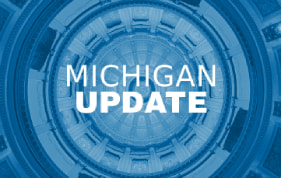HMA consultants are participating on four panel sessions at NatCon25 in Philadelphia, May 5-7. In this blog, HMA Principal Suzanne Daub offers a peek at her session topic and explains how improvisation is being used in behavioral health.
In the fast-paced, high-stakes world of behavioral health, case and care managers are often the steady bridge between crisis and stability, support and recovery. Yet the complexity of their roles—navigating systems, engaging clients with diverse needs, adapting to change in real-time—requires more than clinical knowledge. It calls for presence, empathy, adaptability, and clear communication. These are exactly the skills honed through applied improvisation.
Several years ago, I attended a national healthcare conference and found myself in a session on applied improvisation for medical professionals. I expected a few communication tips. What I experienced instead was a transformative, embodied approach to learning that blended empathy, collaboration, and spontaneity in a way that felt deeply relevant to behavioral health. I knew immediately: this belongs in our field.
That session sparked my own journey. I began formal improv training, developed a personal improv practice that I’ve now sustained for over five years, and eventually became a certified trainer in applied improvisation for healthcare professionals. Since then, I’ve been focused on bridging this work into behavioral health—especially to support case and care managers, who often work at the emotional and logistical front lines of client care.
What Is applied improv? Applied improvisation takes the tools and principles of theatrical improv—like active listening, collaboration, spontaneity, and “yes, and” thinking—and uses them in professional, non-performance contexts to strengthen human interaction. It’s grounded in neuroscience, play theory, and experiential learning.
In medical training, applied improv is used to support communication, teamwork, leadership, and emotional resilience. It helps providers stay grounded in the face of uncertainty, build trust with patients and teams, and respond rather than react. Academic medical centers, residency programs, and interprofessional training teams are increasingly turning to improv to improve quality of care and reduce burnout.
Applied improv is still emerging in behavioral health, but momentum is growing. Innovative programs are using improv to support:
- Engagement in developmental disability services where play-based, nonverbal, and responsive communication is vital.
- Reducing isolation among older adults and dementia caregivers through shared storytelling, and connection-building.
- Substance use disorder recovery by helping individuals rediscover joy, flexibility, and authentic connection in group work.
- Supervision and team development where role-play and real-time scenarios help staff practice challenging conversations and build peer support.
For case and care managers in behavioral health, applied improv can help:
- Enhance engagement, improve presence, listening, and rapport-building with clients across cultures and abilities.
- Build comfort with unpredictability and navigating uncertainty —essential when managing client crises or changing systems.
- Foster collaboration and trust in interdisciplinary teams.
- Bring joy, presence, and creative reset—tools we all need to stay grounded, prevent burnout and foster resilience.
If you’re attending NatCon25, I invite you to join our interactive workshop: “Improv in Behavioral Health: Strengthening Empathy, Collaboration and Adaptability,” where you’ll gain hands-on tools, and leave with a new lens on what it means to connect. There are two sessions available, Monday, May 5, 4:30 PM – 5:30 PM ET or Tuesday, May 6, 11:15 AM – 12:15 PM ET, both located in room 204C.
Don’t miss these other HMA presentations at NatCon25:
Monday, May 5, 10:15 AM – 11:15 AM ET session A3 in room 103B
Harnessing Your Superpowers in Times of Disaster
Breakout Presenter: Monica Johnson, MA, LPC – Health Management Associates
Monday, May 5 10:15 AM – 11:15 AM ET session A13 in room 115BC
Building Sustainable Pathways for Behavioral Health Careers
Breakout Presenter: Allie Franklin, MSSW, LICSW – Health Management Associates






